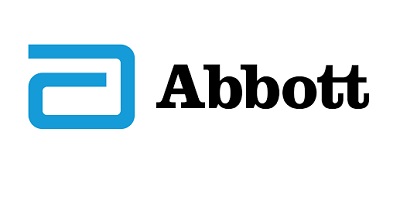When a patient steps into a physician’s office or hospital with a medical concern, the speed and accuracy of diagnosis and intervention is paramount. One of the most critical aspects of this process is diagnostic imaging, which plays a pivotal role in identifying and diagnosing medical issues. However, outdated imaging technology does not allow for the same level of safety and effectiveness when used during intervention.
Making Informed Decisions
In cases where patients present symptoms such as chest pain, weakness, and shoulder discomfort, the need for advanced imaging tools becomes apparent. Coronary angiography, which has been in use since its introduction in 1958, utilizes a special dye to contrast material and x-rays to evaluate the blood flow through the heart’s vessels. On the other hand, optical coherence tomography (OCT), a newer technology, uses light waves to deliver highly detailed cross-sectional images of blood vessels. These imaging options are invaluable when confirming the presence of a blocked coronary artery, as well as for assisting in percutaneous coronary intervention (PCI).
Although coronary angiography is currently the standard of care for guidance when physicians implant stents, it has limitations in capturing information, which can pose challenges in making nuanced decisions during PCI. In contrast, OCT’s high-resolution images and AI empower physicians to easily discern differences in arterial walls, leading to a more comprehensive understanding of the patient’s condition. This heightened level of detail not only improves diagnostic accuracy but also instills greater confidence in intervention strategies, ultimately resulting in more precise and effective patient care.
The recent ILUMIEN IV trial conducted by Abbott compared these two intravascular imaging modalities. Specifically, the trial compared OCT and angiography in PCI patients and provided compelling evidence of OCT’s superiority in several key aspects of coronary interventions. In terms of efficacy, it was found that OCT, results in a substantial increase in the objective of stent area expansion compared to angiography alone. For safety, the data revealed that OCT guidance led to reductions in safety concerns like cardiac death, target vessel myocardial infarction, and thrombosis.
Making Strategic Decisions About Imaging Technology Adoption
The study highlights the significance of staying updated with cutting-edge medical imaging technologies to enhance patient care and safety. The trial’s results demonstrate how investing in advanced imaging tools can lead to more effective procedures and improved patient outcomes. As hospital leaders consider adopting and incorporating imaging technologies into their care plans, they should consider the following best practices:
- Evidence-Based Decision Making – Evaluating medical imaging technology based on evidence is crucial for ensuring the safety and efficacy of diagnostic and therapeutic procedures. By analyzing real-world patient outcomes and experiences, healthcare professionals can identify the strengths and weaknesses of imaging tools, allowing for informed decisions on their use. This evaluation enables medical practitioners to fine-tune their diagnostic accuracy and treatment plans, leading to better patient care and outcomes. Moreover, it promotes evidence-based medicine and supports the continuous improvement of imaging technology to keep pace with evolving medical needs and technological advancements.
- Address Concerns – Periodic reassessment of concerns related to technology and medical imaging is essential to maintain the highest standards of patient care. This proactive approach allows medical leaders to address apprehensions related to patient data security, radiation exposure, and diagnostic accuracy in light of technological advancements and evolving healthcare practices.For example, a historical concern related to OCT adoption has been the use of contrast during imaging. There have been long-standing apprehensions about the potential risks of contrast nephropathy, a kidney condition that can occur as a result of exposure to contrast agents used in medical imaging procedures, including CT scans. However, recent research, such as the OCTIVUS Randomized Clinical Trial, has debunked these concerns by demonstrating that OCT does not pose a higher risk of contrast nephropathy compared to IVUS. This critical finding alleviates one of the major concerns associated with OCT adoption.
- Integrate More Training Opportunities – One primary challenge in implementing new imaging techniques is the variance in training opportunities for interventional cardiologists. Many physicians lack standardized training for advanced imaging technologies during their fellowships, limiting their familiarity and confidence in using these tools. To address this issue, hospital and healthcare leaders should invest in state of the art technology, like AI, that helps with the learning curve and provides efficiencies.
For example, despite the compelling evidence supporting new imaging techniques, primary challenges have been the variance in training opportunities for interventional cardiologists. Many physicians lack standardized training for technology like OCT during their fellowships, limiting their familiarity with and confidence in using this advanced imaging technology. As a result, when they complete their training, they often do not have such tools as part of their diagnostic toolbox.
Looking Forward
Strategically incorporating imaging technology within healthcare is not only essential for improving current patient care, but also for improving standardization of care, creating efficiencies and enhancing physician’s education and learning of new techniques. Advanced imaging techniques greatly enhance the precision of diagnoses and treatment plans, leading to improved patient outcomes. As we look ahead, the healthcare landscape will continue to evolve, with technology playing a central role.




















